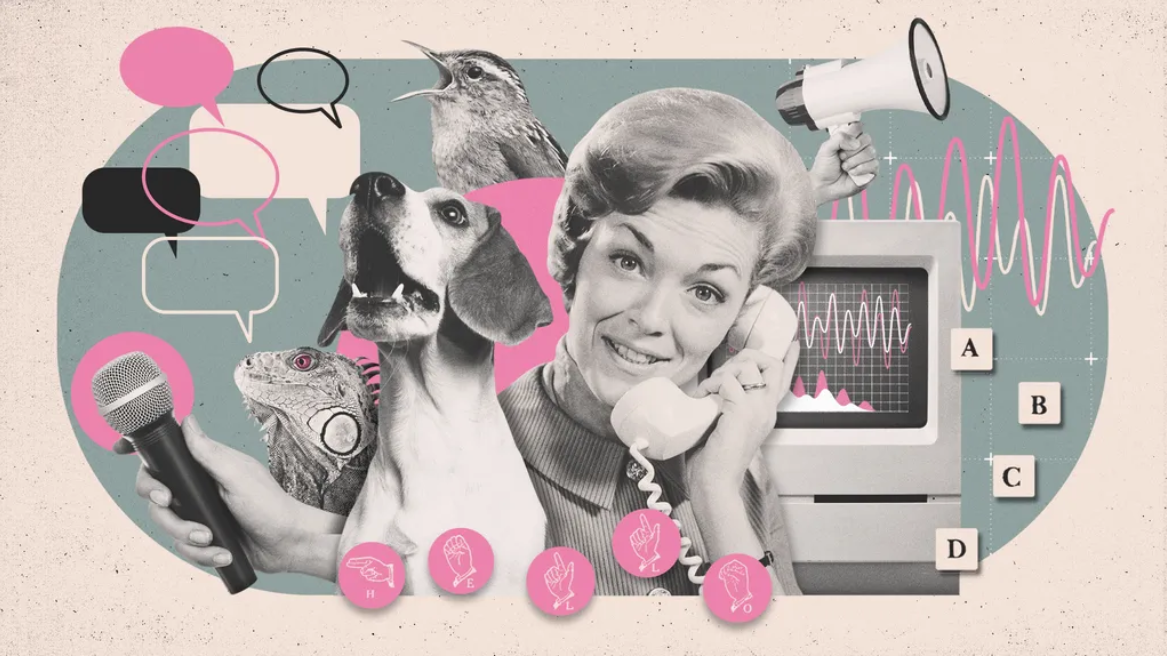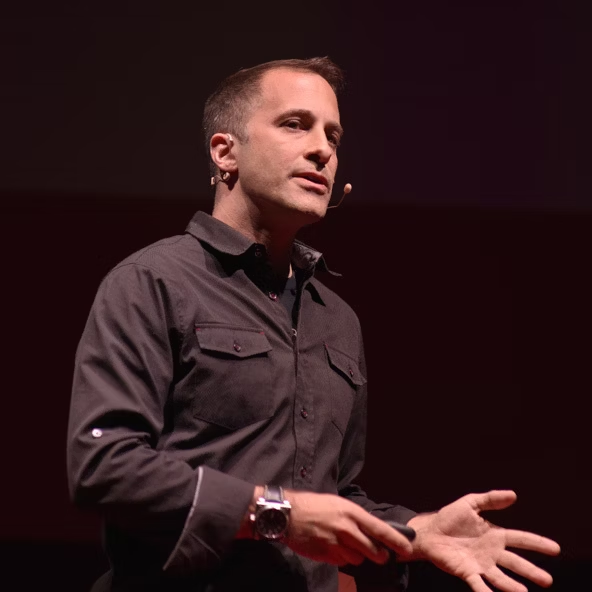
Guest authors Leif DeVaney and David N. Bengston
Imagine being able to understand the meanings of the complex sounds of wild animals, farm animals, or even the dog or cat in your home. What if a “zoological version of Google Translate” made it possible to decode the sounds of many creatures we share this planet with? And what if we could communicate our thoughts to animals in their own language?
As “Dr. Doolittle” as this sounds, it’s exactly what many teams of scientists around the world are attempting, using artificial intelligence (AI) and other advanced technologies to make interspecies communication a reality. Animal vocalization data has grown exponentially with cheaper sensors and advances in technologies such as biologgers, hydrophones, and drones. AI is now available to analyze and make sense of this vast quantity of information. A few examples of ongoing research projects on interspecies communication illustrate the range of possibilities.
A pioneering effort in interspecies communication is the work of animal behaviorist, conservation biologist, and emeritus professor Con Slobodchikoff. He created the Animal Language Institute in 2008 as a forum for discussion and clearinghouse for research on animal communication. In 2018, he founded Zoolingua, a startup working to develop a mobile app to translate dog body language and sounds. Slobodchikoff’s work spans decades and is noteworthy in its breadth and theoretical approach. He writes about a vast array of species in his book Chasing Doctor Dolittle: Learning the Language of Animals, chronicling the similarities of nonhuman animal communication systems to those of humans.
The Earth Species Project (ESP) is a non-profit dedicated to the use of AI for decoding non-human communication. Inspired by the remarkable progress in machine learning applied to human languages, the ESP includes researchers with expertise in AI, mathematics, neuroscience, deep learning, and naturallanguage processing. The diverse team at ESP has developed a technical roadmap to guide their work and is engaged in multiple AI research projects with partners in behavioral ecology, evolutionary biology, and bioacoustics to unlock communication with other species.
Another example of research on interspecies communication is the Cetacean Translation Initiative (CETI). Formed in 2020, CETI is a “nonprofit organization applying advanced machine learning and state-of-the-art robotics to listen to and translate the communication of sperm whales.” The CETI team includes a large interdisciplinary lineup of scientists, including experts in machine learning, robotics, field biology, linguistics, underwater acoustics, and many more. CETI is focused on recording the vocalizations of sperm whales in large areas of the ocean with the goal of training AI to speak whale.
Major advances in interspecies communication would have countless positive and negative impacts. Possible positive consequences include more effective wildlife management, conservation, and rehabilitation through a better understanding of the needs and motivations of wildlife. Animal welfare could increase as a result of knowing when animals are distressed or hungry. Opening communication could fundamentally change popular attitudes towards many animals, especially those perceived as dangerous, as we better understand their complex behavior and see them in a new light. A deep sense of kinship with and empathy for all types of animals could result. Some scientists propose the positive but far out use of decoding animal languages to develop the means to communicate with extraterrestrial aliens, should the need ever arise!
But there could also be many negative consequences of breaking the barrier of interspecies communication. There are ethical concerns about how this technology could be used to manipulate, exploit, and mistreat animals. Industries like commercial fishing and industrial agriculture could use animal communication technology to boost yields at the expense of animal well-being. Poachers and unscrupulous hunters could use it illegally and unsustainably. There is a long history of use and misuse of animals for military purposes, which could be greatly expanded. Karen Bakker, author of The Sounds of Life: How Digital Technology is Bringing Us Closer to the Worlds of Animals and Plants, has said that breakthroughs in communication with animals could bring “… a sense of dominion and manipulative ability to domesticate wild species that we’ve never as humans been able to previously control.”
Significant breakthroughs in communication with animals through the application of artificial intelligence would be a “wild card” – a low probability, high impact development. Radically enhanced communication with animals would result in countless unanticipated consequences. But perhaps the most significant result would be the transformation of our relationship to animals and the natural world.
Leif DeVaney holds a PhD in Conservation Biology and is a member of the Minnesota Department of Natural Resources Deer Advisory Committee. He participated in the US Forest Service’s Forest Futures Horizon Scanning project. Leif’s forthcoming book, Animal Conservation Ethics and the Population Problem, will be available in the Palgrave Macmillan Animal Ethics Series in 2025. Leif can be reached at deva0052@umn.edu. David Bengston is an environmental futurist with the Strategic Foresight Group of the Northern Research Station, US Forest Service, and an adjunct professor at the University of Minnesota. He can be reached at david.bengston@usda.gov





